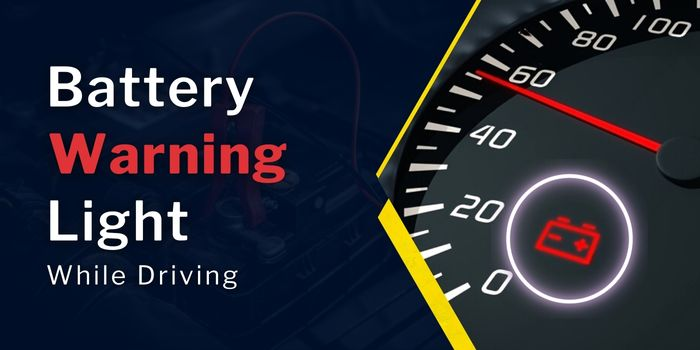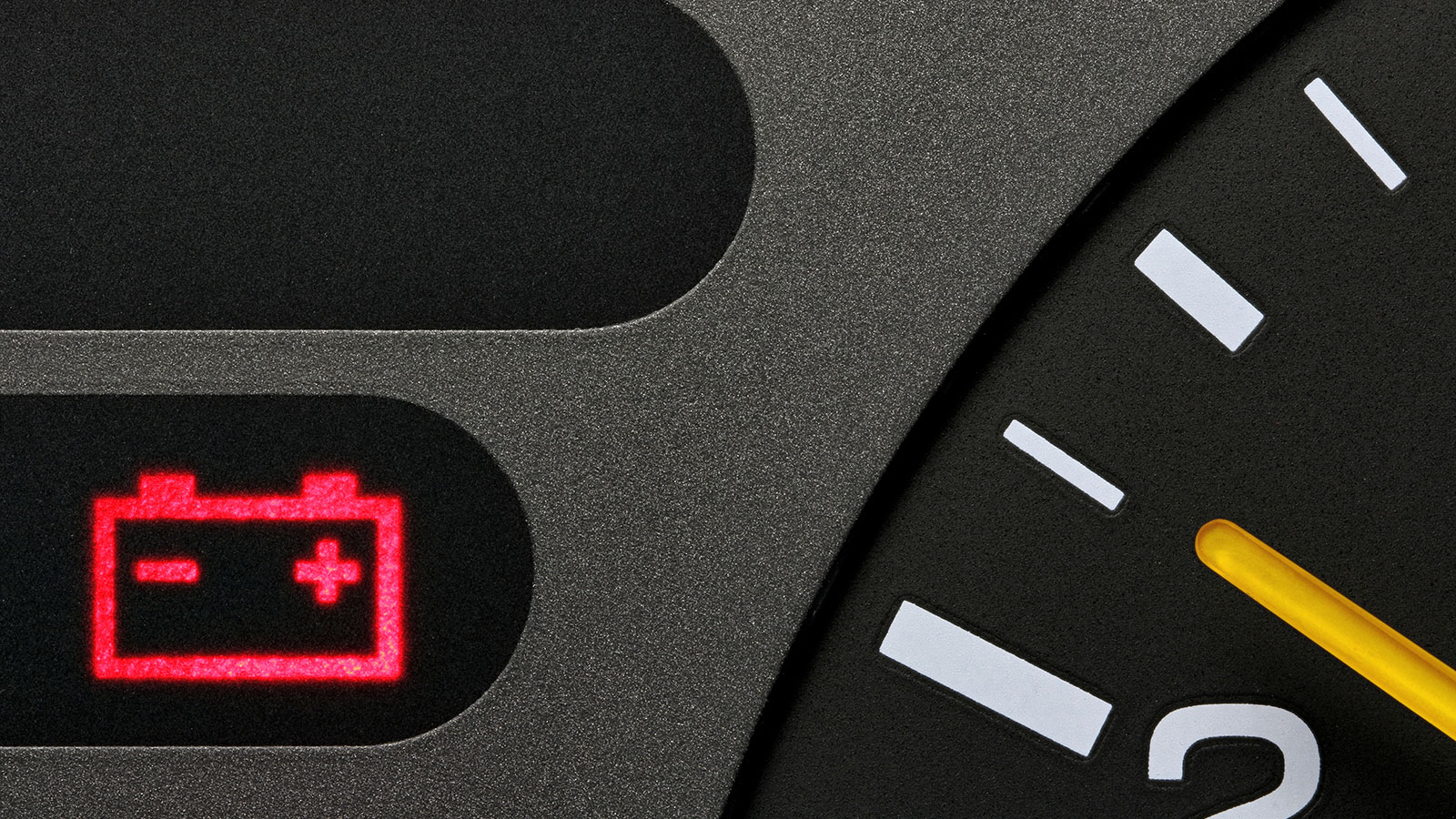If the battery light comes on while driving, it may indicate a problem with the charging system. This could be caused by a failing alternator or a loose or damaged connection.
One of the most concerning moments for any driver is seeing a dashboard warning light illuminate, especially the battery light. This light, typically resembling a battery icon or labeled “ALT” or “GEN,” can cause immediate worry. What does it mean when the battery light comes on while driving? Is it safe to continue driving? What should you do?
In this comprehensive guide, we’ll explore the causes, implications, and solutions for when your car’s battery light comes on during a drive.

Credit: www.reddit.com
Contents
What is Battery Light?
The battery light is part of your car’s charging system and is designed to alert you to potential issues with the electrical system. When the light comes on, it means that the car’s battery is not being charged properly, which could lead to a dead battery and a car that won’t start.
The charging system includes several key components:
- Battery: Stores electrical energy for starting the engine and powering electrical systems.
- Alternator: Generates electricity to recharge the battery and power electrical systems while the engine runs.
- Voltage Regulator: Controls the amount of voltage the alternator produces.
- Drive Belt: Transfers power from the engine to the alternator.
When the battery light comes on, it indicates a problem within this system. Let’s delve into the possible causes and what steps you should take.
Common Causes of the Battery Light
Several common reasons can trigger the battery light to come on while driving. These include a faulty alternator, a broken or loose serpentine belt, corroded battery terminals, or a malfunctioning voltage regulator. Additionally, a failing battery or issues with the electrical system can also be culprits.
1. Alternator Issues
The alternator is crucial for keeping the battery charged and running the car’s electrical systems. If the alternator fails or becomes inefficient, the battery will not receive the charge it needs, triggering the battery light.
2. Faulty Voltage Regulator
The voltage regulator ensures the alternator produces the correct voltage. If the regulator fails, it can cause the alternator to produce too much or too little voltage, resulting in a charging system warning.
3. Worn or Broken Drive Belt
The drive belt connects the engine to the alternator. If the belt is worn, loose, or broken, the alternator won’t be able to generate electricity, leading to the battery light coming on.
4. Battery Problems
While the battery light often indicates a charging system issue, the battery itself could also be the problem. A failing battery might not hold a charge well, causing the light to illuminate.
5. Corroded or Loose Battery Connections
Corrosion on battery terminals or loose connections can impede the flow of electricity, leading to charging issues and triggering the battery light.
6. Electrical System Issues
Problems with the car’s wiring, fuses, or other electrical components can also cause the battery light to come on.

Credit: carorbis.com
Immediate Steps to Take
When the battery light comes on while you’re driving, it’s important to address the issue promptly to avoid being stranded. Here are the steps you should take:
1. Turn Off Unnecessary Electrical Components
Turn off the car’s radio, air conditioning, heated seats, and other non-essential electrical systems to reduce the load on the battery.
2. Check the Dashboard for Other Warning Lights
Look for additional warning lights that might indicate a more serious problem. If the engine temperature warning light comes on, pull over immediately to avoid overheating.
3. Drive to a Safe Location
If possible, drive to a safe location where you can inspect the car or wait for help. Avoid turning off the engine until you reach a safe spot, as the battery might not have enough charge to restart the car.
4. Check the Drive Belt
If you feel comfortable doing so, pop the hood and check the drive belt for signs of wear, looseness, or breakage. If the belt is damaged, do not attempt to drive the car further.
Diagnosing the Issue
Once you’ve reached a safe location, it’s time to diagnose the problem. You might need some basic tools, such as a multimeter, to perform these checks.
1. Check Battery Voltage
Use a multimeter to measure the battery’s voltage. A healthy, fully charged battery should read around 12.6 volts with the engine off. With the engine running, it should read between 13.7 and 14.7 volts. If the voltage is low, it indicates a charging problem.
2. Inspect Battery Terminals and Connections
Look for signs of corrosion on the battery terminals and ensure all connections are tight. Clean any corrosion with a mixture of baking soda and water, and tighten loose connections.
3. Test the Alternator
If the battery voltage is low with the engine running, the alternator might be the culprit. To test the alternator, measure the voltage at the battery with the engine running and electrical accessories turned on. If the voltage drops significantly, the alternator may be failing.
4. Examine the Drive Belt
Inspect the drive belt for wear, cracks, or looseness. A damaged or loose belt can prevent the alternator from working properly.
How to Fix Battery Light Comes on While Driving Issue
Depending on the diagnosis, you may be able to resolve the issue yourself or you might need professional help.
1. Replace the Battery
If the battery is old or failing, replacing it can resolve the issue. Make sure to choose a battery that meets your car manufacturer’s specifications.
2. Repair or Replace the Alternator
If the alternator is not generating enough power, it may need to be repaired or replaced. This task is typically best left to a professional mechanic.
3. Fix the Drive Belt
If the drive belt is worn or damaged, replace it. Ensure the new belt is properly tensioned to avoid further issues.
4. Clean and Secure Battery Connections
Clean any corrosion from the battery terminals and ensure all connections are secure. This can improve the flow of electricity and resolve charging issues.
5. Seek Professional Help
If you’re unable to diagnose or fix the problem, it’s best to take your car to a professional mechanic. They can perform a more thorough inspection and address any underlying issues.

Credit: auto.howstuffworks.com
Preventing Future Issues
To prevent the battery light from coming on in the future, regular maintenance of your car’s electrical system is essential. Here are some tips:
1. Regularly Inspect the Battery and Charging System
Check the battery and charging system during routine maintenance. Look for signs of wear, corrosion, or damage.
2. Keep Battery Terminals Clean
Regularly clean the battery terminals to prevent corrosion and ensure good electrical connections.
3. Monitor the Drive Belt
Inspect the drive belt periodically for signs of wear or damage. Replace it as needed to avoid alternator issues.
4. Test the Battery and Alternator
Periodically test the battery and alternator to ensure they’re functioning properly. Many auto parts stores offer free battery and alternator testing.
5. Drive Regularly
Regular driving helps keep the battery charged and the alternator in good working condition. If you don’t drive often, consider using a battery maintainer to keep the battery charged.
Frequently Asked Questions
Here are some FAQs about the battery light –
Why Is The Battery Light Coming On?
The battery light may indicate a faulty alternator or a failing battery.
What Should I Do If The Battery Light Comes On?
Immediately check the vehicle’s voltage gauge and have the electrical system inspected.
Can Driving With The Battery Light On Damage The Car?
Yes, continued driving can lead to a dead battery and potential loss of power.
How Much Does It Cost To Fix The Battery Light Issue?
Costs can vary, but expect to pay between $200 to $600 for repairs.
How Often Should The Battery Be Checked For Issues?
Regularly inspect the battery and charging system, especially if warning lights appear.
Conclusion
Seeing the battery light come on while driving can be alarming, but understanding its causes and knowing how to respond can help you address the issue promptly and avoid being stranded. Whether it’s a failing alternator, a worn drive belt, or simple corrosion on the battery terminals, identifying and fixing the problem can keep your car running smoothly.
Regular maintenance and periodic checks of your car’s electrical system can prevent many issues that cause the battery light to come on. By staying proactive and addressing problems early, you can ensure your vehicle remains reliable and safe on the road. If you’re ever in doubt, don’t hesitate to seek professional help to diagnose and resolve any issues with your car’s charging system.